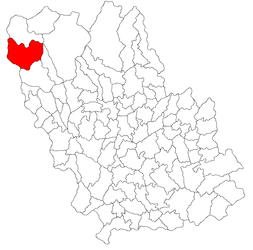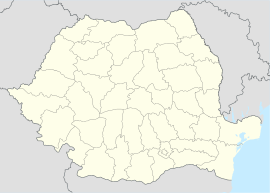Sinaia
Appearance
Sinaia | |
|---|---|
 Hotel Caraiman Sinaia | |
 Location in Prahova County | |
| Coordinates: 45°21′0″N 25°33′5″E / 45.35000°N 25.55139°E | |
| Country | Romania |
| County | Prahova |
| Government | |
| • Mayor (2020–2024) | Vlad Gheorghe Oprea[1] (PNL) |
| Area | 89.27 km2 (34.47 sq mi) |
| Population (2011)[2] | 10,410 |
| • Density | 120/km2 (300/sq mi) |
| Time zone | EET/EEST (UTC+2/+3) |
| Vehicle reg. | PH |
| Website | www |
Sinaia is a curort town in Prahova Country, Romania. This town was named after the Sinaia Monastery of 1695.
References
[change | change source]- ↑ "Results of the 2020 local elections". Central Electoral Bureau. Archived from the original on 9 October 2020. Retrieved 9 June 2021.
- ↑ "Populaţia stabilă pe judeţe, municipii, oraşe şi localităti componenete la RPL_2011" (in Romanian). National Institute of Statistics. Retrieved 4 February 2014.


